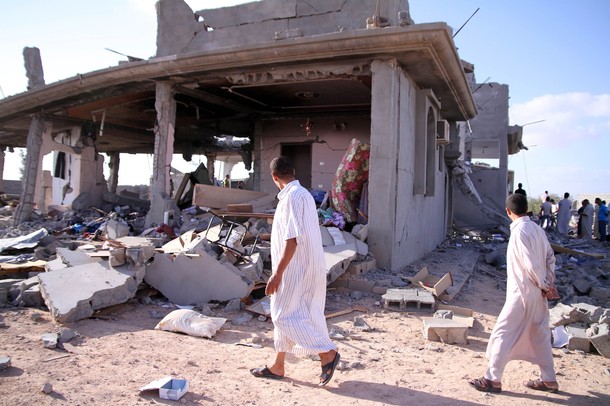
From Marc Garlasco, the Washington Post: I investigated the organization’s actions in Libya last year while at the same time working with the United Nations’ civilian protection office in Afghanistan. The difference in how NATO interacted with me in each place was striking. I had a collegial, open relationship with officials in Afghanistan — and an adversarial and frosty one with those in Libya.
In August 2011 laser-guided bombs dropped by NATO forces reduced three homes in Majer, Libya, to rubble. The strike killed 34, the largest loss of civilian lives from a NATO attack; 38 others were wounded. As the head of the U.N. investigating team for all NATO activity in Libya, I sifted through the debris and makeshift memorials in the small rural village near Misrata while interviewing survivors, trying to piece together what had happened. It didn’t make sense — NATO hit the homes and returned for a follow-up strike, killing the rescuers who were frantically digging for survivors minutes after the first bombs struck. A pilot using laser-guided bombs would have been able to see the rescuers at work.
I wanted to talk with NATO officials to understand the incident and help initiate the process for lessons learned from the civilian casualties, but NATO refused to meet. . . .
Although civilian casualties were reported in only nine targets out of more than 7,700 dropped bombs in Libya in 2011, NATO refused to discuss those incidents or provide gun-camera footage and questioned why the United Nations was investigating. . . .
The United Nations provided Global Positioning System coordinates for each strike, dates and times of attacks, specifics on the bomb fragments found at each site, details about the civilians killed and the lack of any military signatures such as weapons or communications equipment that would have proved these were legitimate military targets. NATO responded that we had gone to the sites too late to find any proof of military targets. But if I could find the remnants of NATO bombs months after some strikes, surely there would be remnants of the intended targets. Instead I found only the remains of homes.
The action in Libya was launched for principled ends, succeeded in protecting Libyans from Moammar Gaddafi’s atrocities and did so while causing very few civilian casualties. Still, NATO is wrong to say it does not have to investigate civilian casualties. For one thing, after NATO airpower turned the war in the favor of the rebels in Libya, it should not be difficult to gain access to nine sites. But alliance officials should want to improve targeting to prevent civilian deaths. If NATO intelligence was wrong in these instances, what produced the error? And with some floating the possibility of NATO intervention in Syria, shouldn’t the alliance recognize its opportunity to verify the legitimacy of targets and better ensure that civilians are spared?
Marc Garlasco headed the United Nations Protection of Civilians office in Afghanistan in 2011 and was the U.N. senior military adviser for the Human Rights Council’s Independent Commission of Inquiry on Libya where he led the investigation into NATO’s actions during the war in Libya. (photo: Getty)
Image: getty%203%2030%2012%20Majer.jpg
